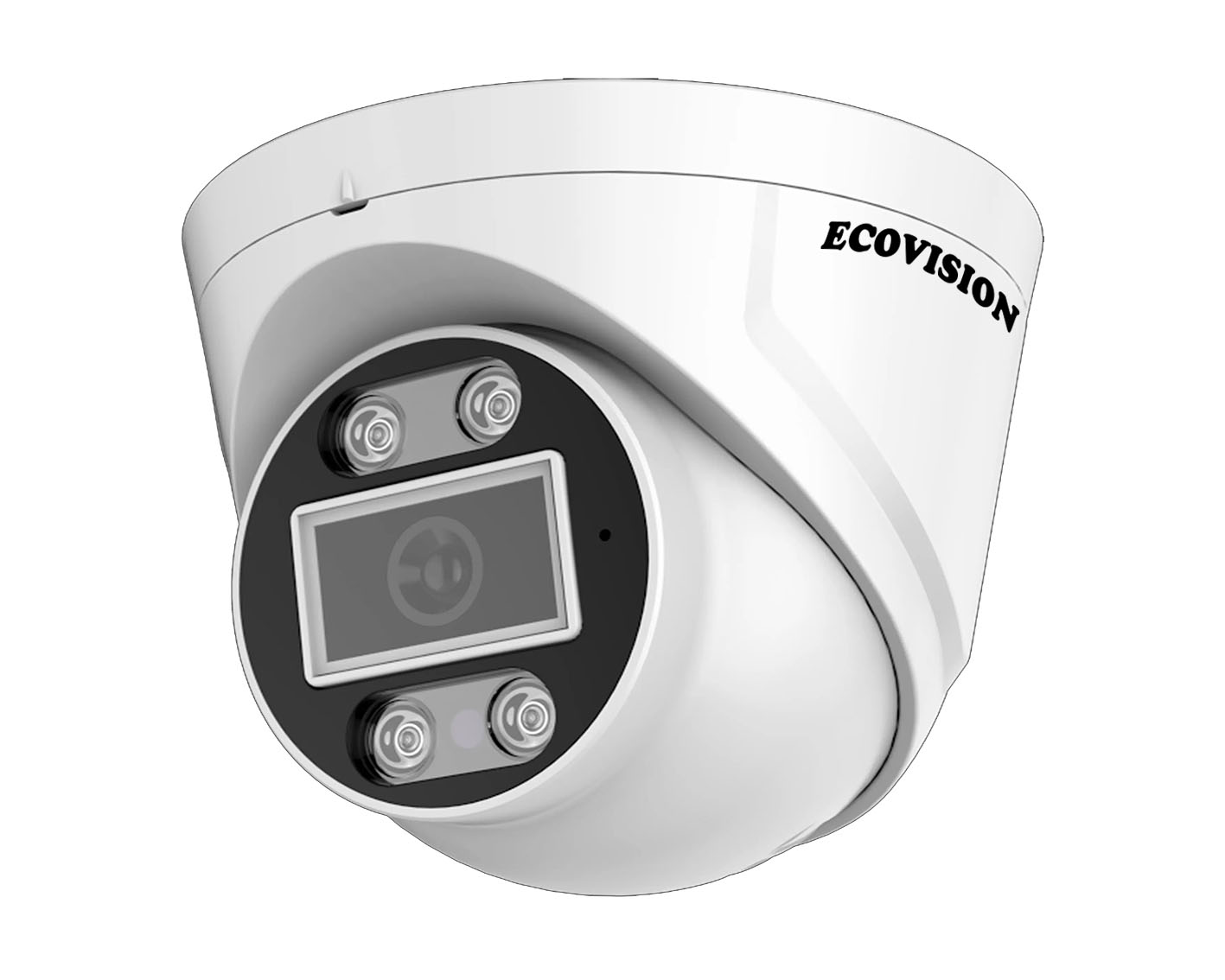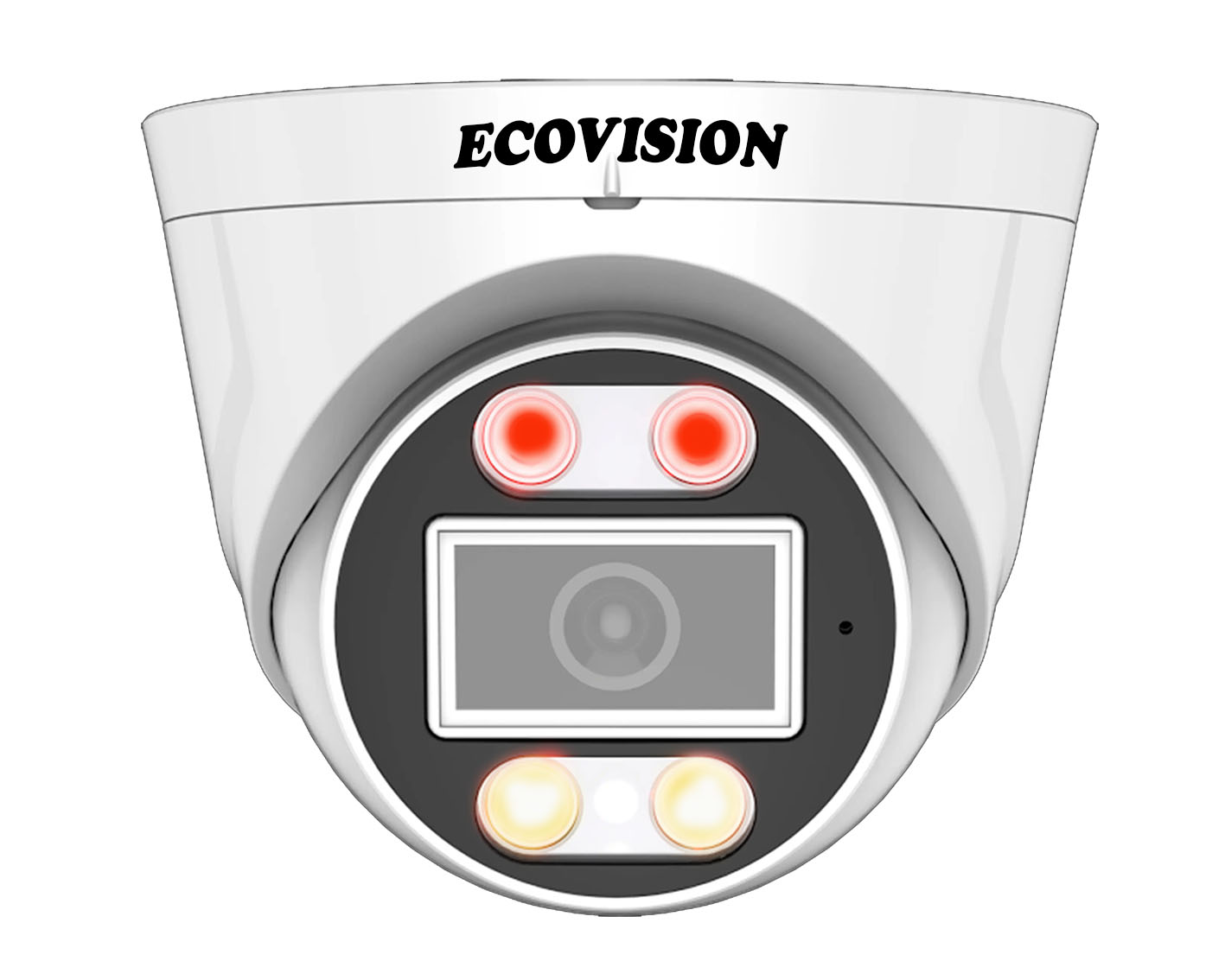ES-NDTMD-54368 EZ
5 MP AI Smart Dual Light Fixed-Lens Two Way Audio Dome Network Camera
- 5.0 MP 1/3″ SC401AI Low illumination and high definition image CMOS sensor.
- Smart Hybrid Light provide three supplemental lighting modes: IR mode, white light mode, and smart mode.
- Advanced H.265+ (Compatible with H.265/H.264) video compression, super low rate, HD quality image.
- Support ONVIF, access third party, Support various mobile monitoring, Support cloud technology.
- Built-in warm light/IR LED, the Illumination distance is 30 mtr and the max. warm light distance is 30 m.
- Image Features: Support 2D/3D NR, Digital Wide Dynamic Range (WDR) / Automatic Gain Control (AGC).
- Two Way Audio : The camera has a high quality microphone and audio output to communicate in real time directly with your camera setup.
- 12 VDC/PoE power supply, easy for installation.
Product Discription
An IP CCTV camera, or Internet Protocol Closed-Circuit Television camera, is a modern surveillance device that captures video and transmits it over an IP network. Unlike traditional Analog CCTV cameras, which require dedicated wiring and equipment, IP CCTV cameras utilize network connectivity for data transmission and remote access. Key features include high-resolution video capture, remote access via the internet, motion detection, and compatibility with video management software. They are commonly used for security and monitoring purposes in various environments, allowing users to view live or recorded footage from anywhere with an internet connection.
IP cameras work the same way as digital cameras to capture high-quality images. What sets them apart is the capability of IP cameras to compress those files and automatically transmit them to a network video recorder (NVR) via a network. In a building that is already equipped with a network, all you have to do is connect IP surveillance cameras and other devices to your network system, just like you connect your Laptop or Cell Phone.
Artificial Intelligence (AI)
Artificial Intelligence (AI) has significantly impacted the field of video surveillance, enhancing the capabilities of traditional surveillance systems and enabling advanced functionalities.
A.I. for video surveillance utilizes computer software programs that analyze the audio and images from video surveillance cameras in order to recognize humans, vehicles, objects, attributes, and events. Security contractors program the software to define restricted areas within the camera’s view (such as a fenced off area, a parking lot but not the sidewalk or public street outside the lot) and program for times of day (such as after the close of business) for the property being protected by the camera surveillance.
In the field of physical security, Artificial Intelligence analytics uses powerful algorithms to automate detection, categorization, and analysis of objects and motions in a camera’s view. It reduces costs, speeds up responses, and facilitates new practices and processes.

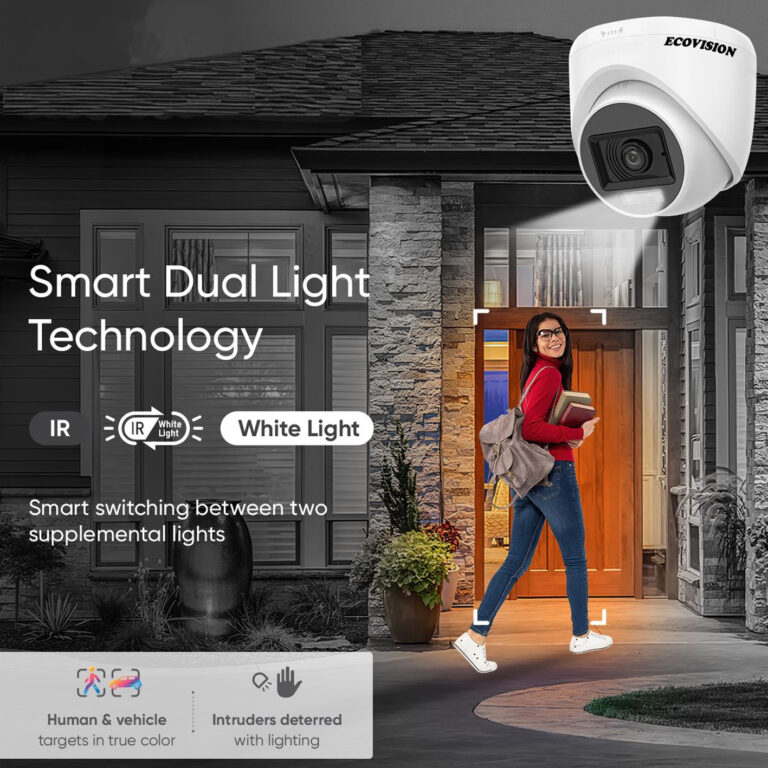
Smart Dual Light
Supplemental lighting enables security cameras to “see” clearly in dim environments. Conventional cameras with IR light provide black & white images which usually results in loss of details. While white light cameras offer colorful images, when the light is always on, it might be disturbing in some specific scenarios.
To solve these pain points, Ecovision has created a new approach to supplemental lighting technology – the Smart Dual Light. Security cameras with Smart Dual Light provide three supplemental lighting modes: IR mode, white light mode, and smart mode. Users can take the advantage to select the ideal lighting mode for their application and the specific environment.
The Smart Dual Light technology adopts smart algorithm to accurately detect targets. The IR illuminator is normally on at night. When the target is detected by the camera, the warm light turns on and the camera records the full-color video and information of key events. When the target is out of the monitored area, the warm light turns off and the IR illuminator turns back on, which helps reduce light pollution in the area.
Two-Way-Audio
Elevate your security measures with our cutting-edge Two-Way Audio CCTV. Experience the power of real-time communication right from your camera setup. This feature not only captures visuals but also enables you to listen and speak, revolutionizing the way you monitor your spaces. Talk and listen through your camera setup in real time. CCTV cameras equipped with two-way audio have a built-in microphone to capture audio from the camera’s surroundings and a speaker to play sound. Analog audio signal collected from a built-mic into a digital audio signal with low level of noise and distortion and camera’s digital audio to analog audio (audible sound waves) via DCA, vibrate continuously and emit sound.
When the two-way audio feature is activated and a remote user is accessing the camera feed, they can not only see the video but also hear the audio from the camera’s location. Additionally, the remote user can transmit their voice to the camera location through the speaker.
Overall, the two-way audio feature adds an extra layer of interactivity and functionality to CCTV cameras, enabling users to not only see but also hear and communicate with events or individuals at the camera’s location in real time.
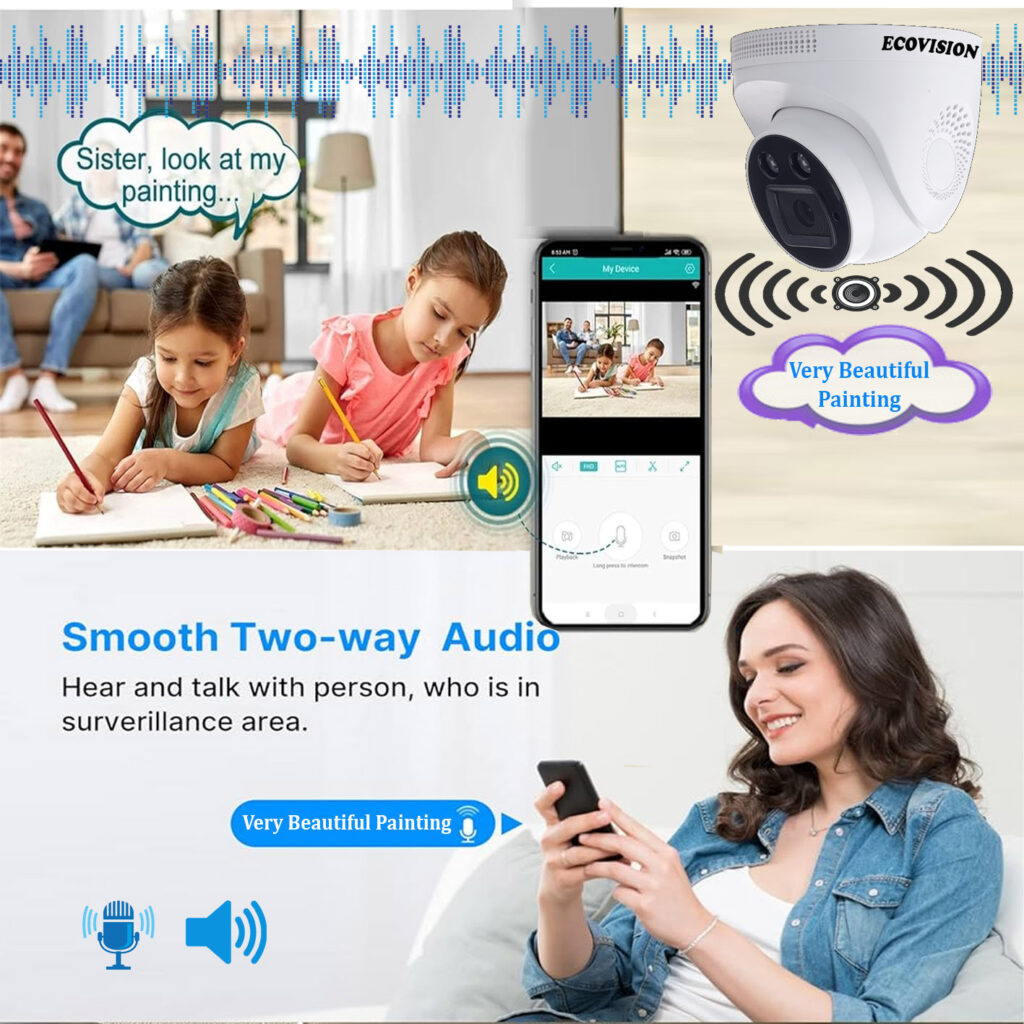
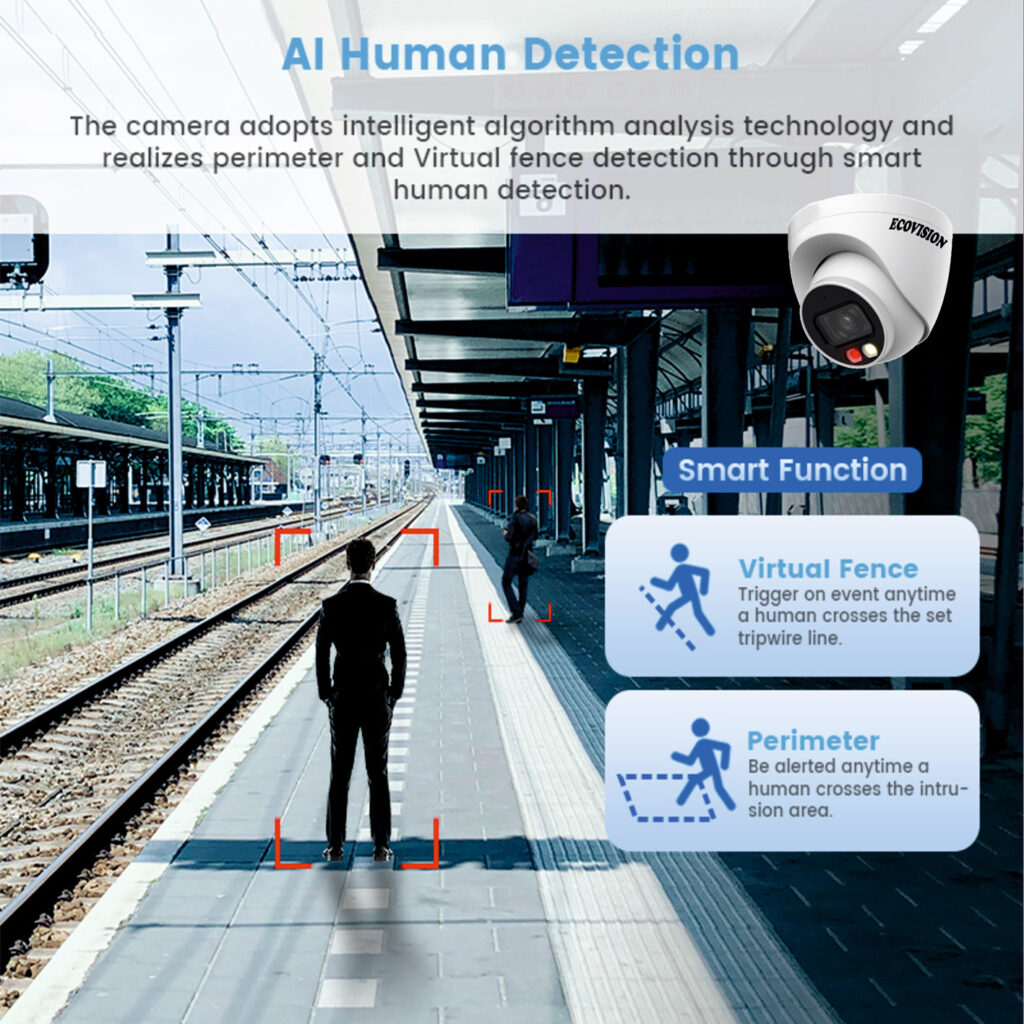
Humanoid Detection
The human detection technologies of these cameras are a great innovation, in these cameras with Artificial Intelligence, the ordinary motion detection evolves into the new dimension of Human detection. This is very different from normal motion detection because it does not simply trigger on the pixel change, but only when a human body is detected. Do not detect an animal, or an object moved by the wind, but only a real person. Advanced algorithms are used to differentiate and send an alarm when human shapes are detected. False alerts are filtered for up to 95% accuracy, saving customers the hassle of unwanted alarms.
Perimeter Protection
These cameras detect when a person has crossed a certain virtual line or broken into a defined perimeter. They can also distinguish in which direction the person is heading. This detection is very useful in public places, or in companies, to warn in case of unauthorized access in sensitive or dangerous areas. That represents a broad range of physical security options such as access control, gates, barriers and other security controls, a camera with video analytics protect the perimeter in a reliable and cost-effective manner.
SUPPORT H265+
An intelligent algorithm that can greatly decrease the bitrate of video based on a standard H.265 codec. H.265+ is such an optimized video encoding technology based on the standard H.265/ High efficiency Video Coding (HEVC) format. These improvements are sometimes called “smart codecs.” These smart codec technologies save more space and bandwidth than plain H.265 or H.264 by predictively adjusting the bitrate on the fly based on background and foreground analysis of the scene being recorded.
The main differences are decreased bitrate (the number of bits that are transferred or processed per unit of time.) and reduced bandwidth (the rate of data transfer measured in bits per second (bit/s)), due to three key technologies — prediction encoding, noise suppression, and flexible bitrate control. Smart codecs provide bandwidth savings by analysing the scene being captured. If the scene is mostly stable or static, it is used as a background frame or picture. When there are moving objects or interruptions to the stable scene, they are focused and captured in new reference frames. If the object keeps moving, only data from the moving object is added.
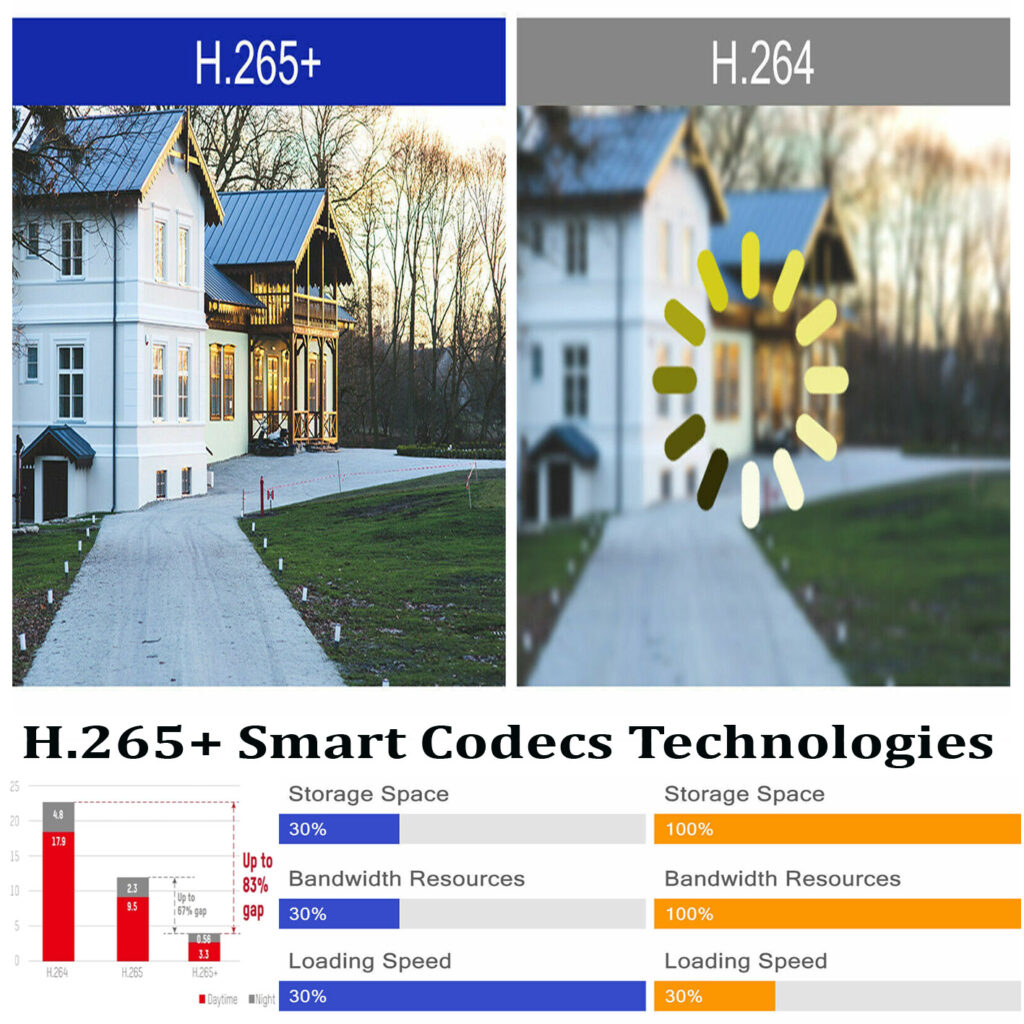

3D-DNR (Digital Noise Reduction)
3D-DNR stands for multidimensional digital noise reduction (DNR: Digital Noise Reduction) and was developed for shooting at night or in dimly lit places. 3D DNR is better at removing the grainy appearance that low-light video tends to take on and is far better for videos with lots of motion, as it the frame-on-frame method of comparison allows it to detect motion more accurately. As a result, it does not create motion blur in the images, and moving objects do not leave motion trails behind them
Wide Dynamic Range (WDR)
Wide dynamic range (WDR) technology balances the light on an image via image sensors (CCD & COMS) and digital signal processor (DSP). When part of an image is extremely dark but another part is so bright you can’t see any details, that’s dynamic range—the difference in lighting. Cameras with wide dynamic range (WDR) have special software that allows them to balance that lighting for one clear image. This makes them ideal for recording areas like store entrances where the contrast between the sunshine outside and the dim lighting inside can be extremely difficult to record.
Automatic Gain Control (AGC)
Automatic Gain Control (AGC) increases the signal strength of security cameras when the light level is dim, and puts a cap on it when it is bright; this keeps the output signal consistent.
In low-light conditions, security cameras use Automatic Gain Control (AGC) to artificially improve their “dynamic range” and produce usable images. AGC is basically a from of amplification where the camera will automatically boost the image received so that objects can be seen more clearly. In normal light conditions the camera will display a normal picture. However, when the light quality drops below a certain level the camera will begin to boost the signal to compensate for the lack of light.
The advantage of this technique is that your camera will produce images in much lower light conditions than standard. The downside is that the amplification is not only on the usable data in the image but also the background noise. This means that the more you amplify, the more noise you will see and the poorer the image quality will be.
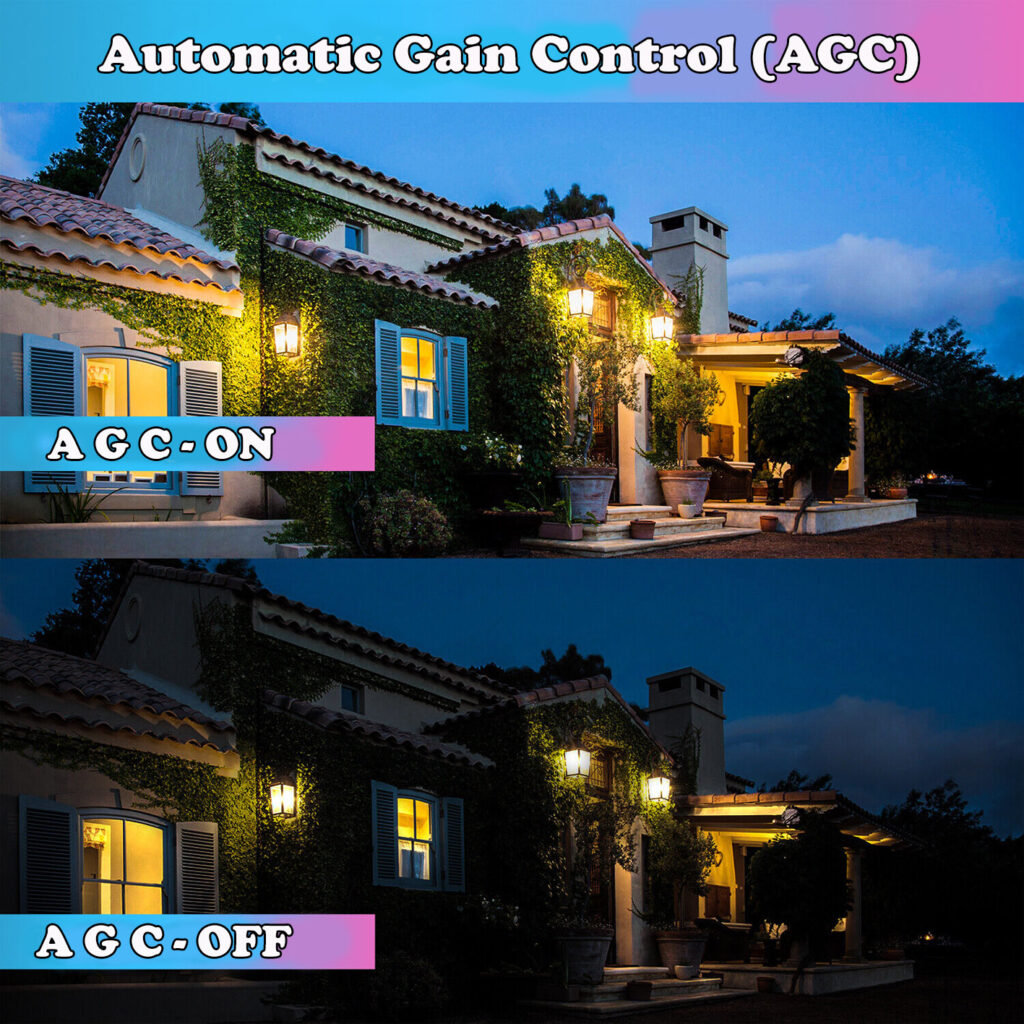
Specification
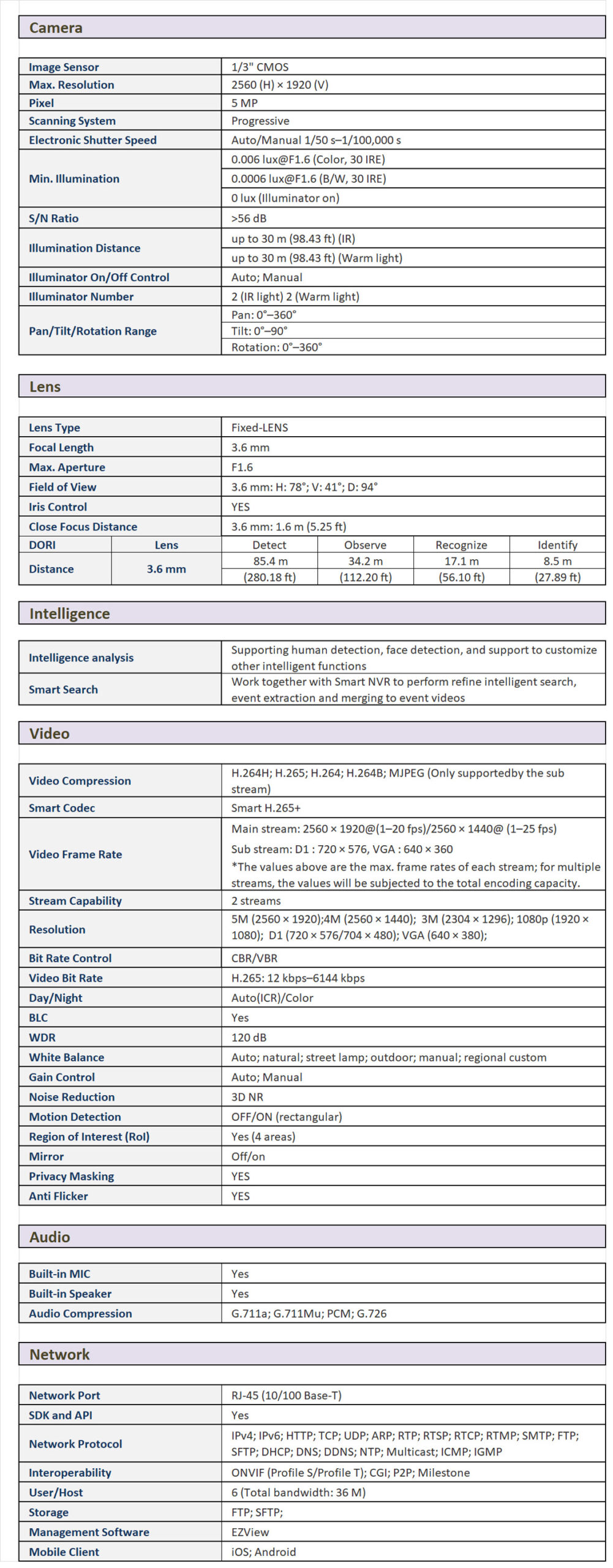
All rights reserved. Design and specifications are subject to change without notice. Pictures in the document are for reference only, and the actual product shall prevail.

